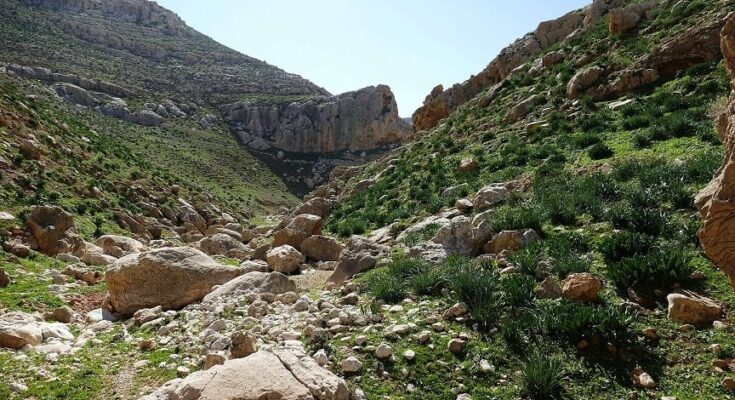
Botanists in Israel have cultivated a long-extinct plant that could be a biblical tree species. They planted a 1,000-year-old seed discovered in a cave in the Judean Desert in the 1980s.
Researchers involved in the project say they believe the particular species of tree, now considered extinct, could have been the source of a healing balm mentioned in the Bible and other ancient texts.
The ancient seed was discovered during an archaeological dig in the lower Wadi-Makukh Desert region north of Jerusalem. It was found to be in pristine condition, but scientists at the time were unable to determine the type of tree from the seed alone.
An international team of botanists, led by Dr. Sarah Sallon, a physician and the founder of the Louis L. Borick Natural Medicine Research Center at Hadassah University Medical Center in Jerusalem, planted the seed for further investigation twelve years ago.
Sallon said it is possible the tree is the source of the biblical “tsori,” a medicinal plant extract associated with the historic region of Gilead north of the Dead Sea in the Jordan Rift Valley. It is a mountainous and forested area that was heavily cultivated, and now it is part of Jordanian territory.
The team’s findings, described in a study published on September 10th in the journal Communications Biology, unlock some of the secrets surrounding the origin of this enigmatic specimen, which Sallon named “Sheba.”
Genetic fingerprint without a match
To germinate the sample, study co-author Dr. Elaine Solowey, research emeritus at the Center for Sustainable Agriculture at the Arava Institute for Environmental Studies in Israel, used a process perfected during earlier research led by Sallon on 2,000-year-old palm seeds.
The approach involved soaking the mysterious Judean Desert seed in water mixed with hormones and fertilizer before planting it in a pot of sterile soil. Five and a half weeks later, a little shoot sprouted.
Something like a cover called an operculum was used to protect the tip of the shoot. Once it was unearthed, the team used radiocarbon dating on the organic matter to estimate the age of the plant and found the specimen dated between 993 and 1202.
Shortly thereafter, the tree began to produce leaves. Sallon shared images of the tree and its leaves with botanists around the world. One expert argued that it belonged to the genus Commiphora. The group includes about 200 species of trees found mainly in Africa, Madagascar, and the Arabian Peninsula.
Sallon then shared a sample of the leaf with study co-author Dr. Andrea Weeks, associate professor in the biology department at George Mason University in Fairfax, Virginia.
Weeks sequenced the tree’s DNA, confirming the preliminary identification. However, the specimen did not match any of the known Commiphora species in his database.
With its unique genetic imprint, the unknown Commiphora species likely represented an extinct species of another species endemic to the region around the Judean Desert, according to the study.
Is it really a biblical tree?
The tree is now over 14 years old and almost 3 meters tall. It has neither flowered nor produced fruit. Without these more easily identifiable features, it is not possible to identify this enigmatic species with certainty, according to the study.
Based on historical research, Sallon suggested that the tree may be the source of what ancient texts from the region, including the Bible, describe as “Judaic Balsam” or “Balm of Gilead”—an aromatic resin that was collected from the Judean Desert in order to to produce a coveted perfume which was exported around the world at the time.
However, the tree never gave off any kind of scent. Once the plant was more mature at around three years old, the team conducted a phytochemical analysis on its resin, leaves, and twigs to test for aromatic compounds such as those found in the myrrh of the Judean Balsam. There were none.
Instead, the team identified some compounds known for their medicinal use that have been traced back to the resin of the related tree species, Commiphora wightii, which has potential cancer-fighting properties, it was noted in the study.
The study concludes that the tree is not the source of Judea’s Balsam but a close cousin, and one of the non-scented Commiphora that is a treasure chest of medicinal compounds.
Due to the presence of these healing compounds, Sallon and her colleagues concluded that the tree may have been the source of a medicinal balm known as “tsori” that is also mentioned in historical texts.
Seeds with such incredible longevity are rare, according to Dr. Louise Colville, head of research in seed biology at the Royal Botanic Gardens, Kew, London.
[With information from CNN]



